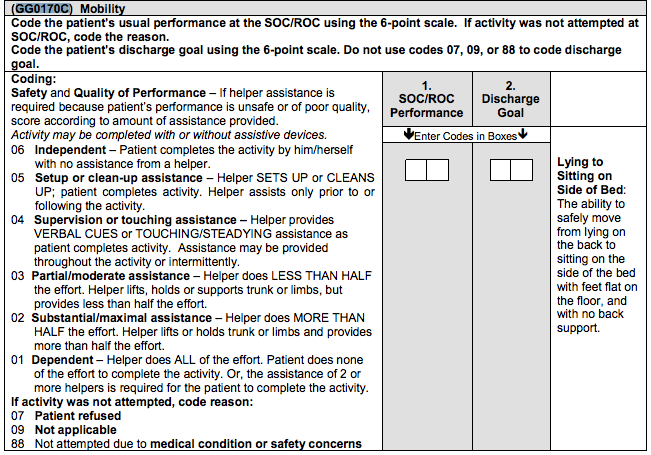Home health agencies now can see a draft of the Outcome and Assessment Information Set (OASIS) that will be used starting in 2017. This version contains new standardized items, among other changes.
Currently, HHAs are using the OASIS data set that was developed to comport with ICD-10, which was implemented earlier this year. The new OASIS-C2 version is scheduled to be implemented on Jan. 1, 2017.
OASIS-C2 is meant to enable home health providers to comply with requirements set by the Improving Medicare Post-Acute Care Transformation (IMPACT) Act. IMPACT was signed into law in 2014. It calls for various types of Medicare-certfied post-acute providers—including home health agencies, skilled nursing facilities, inpatient rehabilitation facilities and long-term care hospitals—to begin submitting certain types of standardized data. The idea is to get an apples-to-apples comparison of various post-acute settings, to inform future policies and payment methodologies.
There are three new standardized items in the draft version of OASIS-C2 that the Centers for Medicare & Medicaid Services (CMS) posted before Christmas. They are M1028, M1060 and GG1070c. (See images at the bottom of this article.)
Other medication and integumentary items also have been changed, to be standardized with other care settings. In addition, the look-back period and item number were changed for five items: M1500, M1510, M2015, M2300 and M2400.
CMS also drew attention to certain other alterations, such as a switch from Roman to Arabic numerals for the numbering in pressure ulcer staging.
The IMPACT Act specifies the timelines that providers must meet for reporting cross-setting measures. Providers should be reporting the measures related to skin integrity, medication reconciliation and resource use as of Jan. 1, 2017.
New standardized items:



Written by Tim Mullaney
Photo Credit: By Daniel Sone (photographer) [Public domain], via Wikimedia Commons




